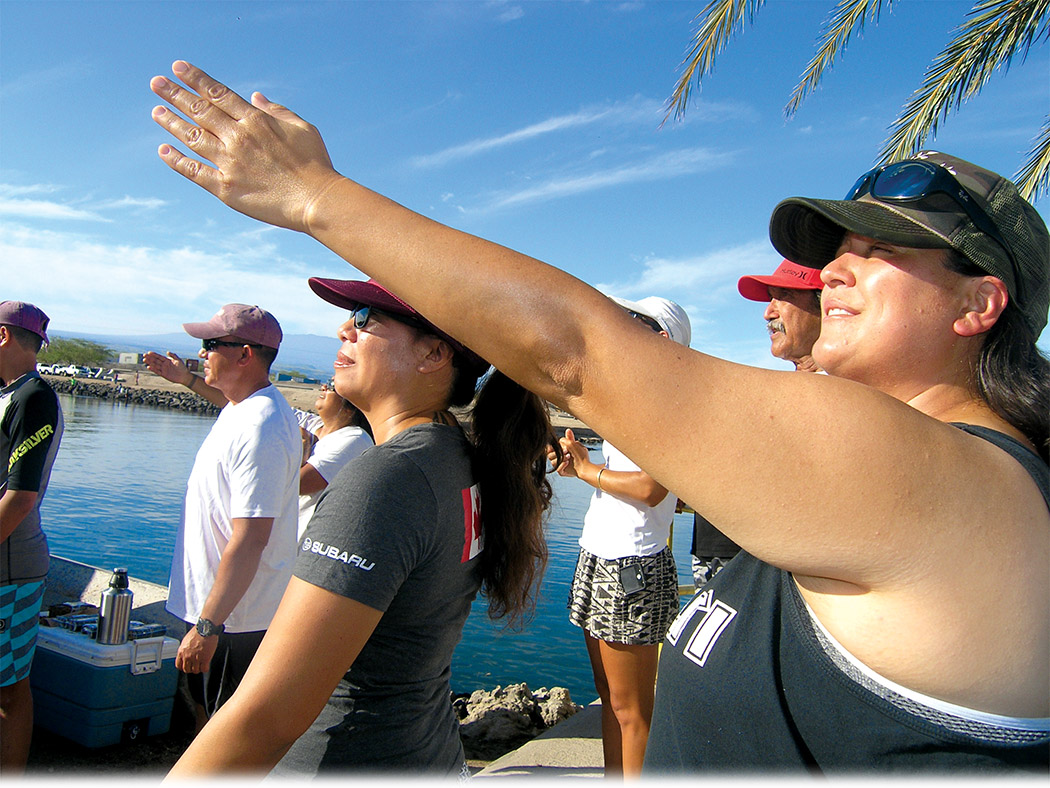
Hanauna Ola: Sustaining the Generations through Voyaging
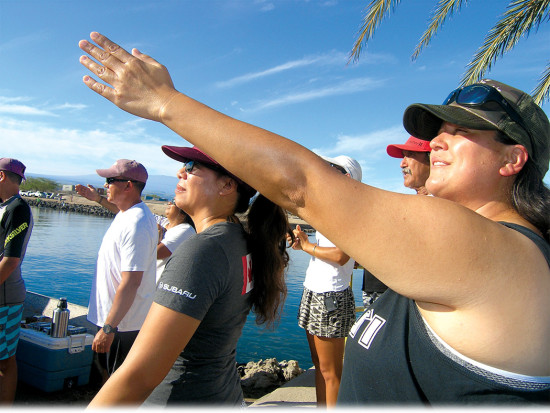
By Jan Wizinowich
For centuries, the spirit of the voyaging canoe lay dormant only to be reawakened with a question: Is it possible to sail a voyaging canoe to Tahiti using non-instrument navigation? Now, many years later on Hawaiʽi Island, Pwo navigator Chadd Paishon asks a different question: Can Hawai‘i Island provision one canoe for one voyage?
“Some years ago, before we started the worldwide voyage, on [Hawai‘i] Island we already had our school gardens. I was trying to figure it out for myself; what to say to the garden folks about the canoe? If our kūpuna (elders) were able to come here aboard their canoes and were able to sustain themselves, then is it possible for us to provision one canoe for one voyage?” said Chadd.
Land and waʽa (canoe) crew are striving to answer that question with a resounding “Yes!” through a three year Administration for Native Americans (ANA) grant awarded to Na Kalai Waʽa for the Hanauna Ola program, which will culminate in a sail to Papahānaumokuākea (northwest of the Hawaiian Islands) in 2019.

Beginning in 2016 and now in its second year, the ʽOhana Makaliʽi is digging deep into traditions to prepare for a 2019 sail that will be fully provisioned from the soil and hands of the island and in the process re-establish the cultural practices that make up a healthy voyaging-based life.
“At Na Kalai Waʽa, what we try to do is to rediscover what that core is and try to live that legacy. That legacy is to involve everybody. Not only human beings but animals too. The health of the ocean. It’s not separate. It’s pretty much everything,” said Shorty Bertelmann, Pwo Navigator and Hanauna Ola sail director.
Along with 30 waʽa crew, the program is made up of a group of ten school gardens plus Hōʽea Moku, the Na Kalai Waʽa canoe garden in Kohala, who will endeavor to provision Makaliʽi for a one month voyage.
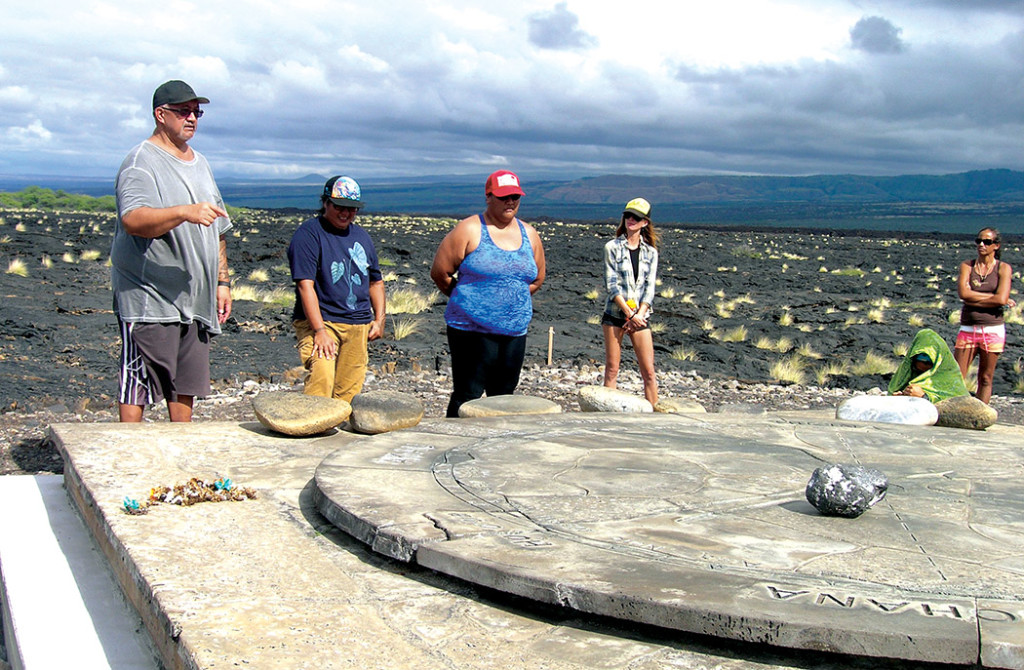
Waʽa Crew
In its first year, the 30 participating waʽa crew engaged in an array of trainings to equip them with the complex skill set they needed to be successful crew members. Furthermore, it is primary for a voyage to know one’s place. “It’s not just a matter of going. Before you leave you have to know everything about your island, the birds, the reef. Our journey is to learn our island. When we arrive, we’re Hawaiʽi Islanders who came,” said Shorty.
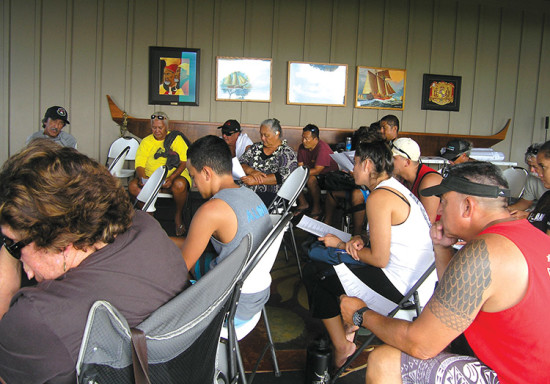
The crew explored wahi pana (a legendary place) such as Kumukahi, the eastern most point of the island and a traditional embarkation point; Koʽa Heiau Holomoana, Mahukona’s navigational heiau (place of worship); and Kalaemano Cultural Center at Ka‘ūpūlehu where the star compass Kukuku o Kalani now resides.
At a year two orientation gathering last October, crew gathered around Kukulu o Kalani. The star compass, brought to Hawaiʽi by master voyager Mau Piailug, is an essential navigational tool. “It’s the origin; the place to begin. It’s that beginning point that allows you to understand the rising and setting. That whole continuum that’s going on right now. Where the sun goes down and where it’s going to come up tomorrow, where that star is going to come from. Where the wind is coming from. Feel that wind on your face and notice that subtle change and when it starts to shift,” explained Chadd.
This is where navigational knowledge begins, but it continues on the water with crew observing and reading the story displayed in the sky and then to setting and holding a course using natural elements as a guide.
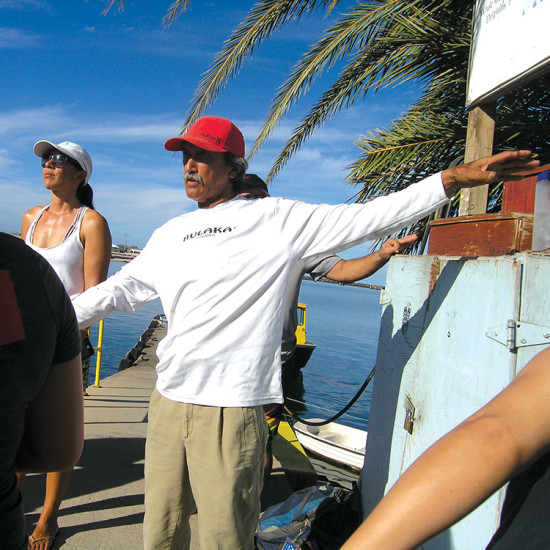
It is fall equinox and Makaliʽi awaits her crew just inside the sea wall at Kawaihae Harbor. On this day, they will be sailing north. If they find the wind and the conditions are right, they will sail across the channel to Hāna, Maui and back. Before leaving the dock for a sail the crew gathers and clasps hands for a blessing and to set intentions.
Shorty questions the crew about what they notice about conditions. What is the meaning of the position of the sun? What do those clouds mean? How has the sky changed from sunrise? From last night?
The crew will also learn about and experience all the roles on the canoe. Everyone will learn to lead and to navigate, and at the core of it all is spirit. The canoe fosters an intangible spiritual connection that goes far beyond skills and schedules. “We can do everything we need to do to voyage. Be on track and all the training and everything, but for voyaging we need to connect to the universe and that’s multi-dimensional. That’s like all the training plus another dimension,” said Shorty.
Hānai Waʽa
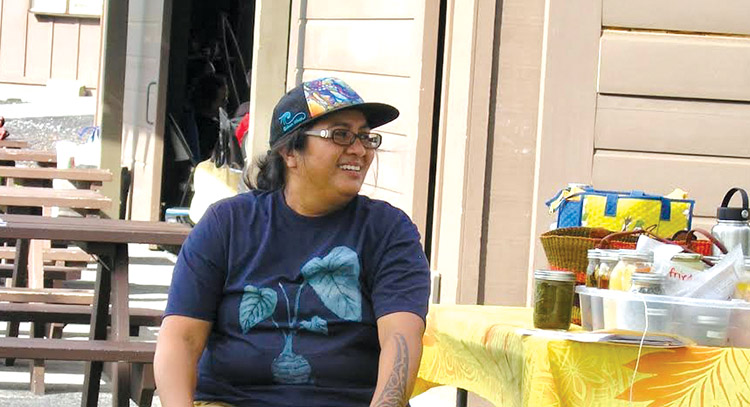
Hānai means to foster, sustain, connect and it is that spirit that infuses every aspect of Hanauna Ola. “The spiritual journey is a part of us and it’s never separated. When we start to talk about ceremony, protocol, it’s the same with everything we do. When we’re putting our plants in the ground it’s the intention you plant with, the spirit you plant with,” said Chadd.
At the heart of hānai waʽa voices are raised in chant, a conduit to the deep spirit that connects everything and is the manner in which voices are sent out on the wind when a canoe leaves the shores.
“Chanting is huge, an integral part of everything that we do. A chant might ask permission for a canoe to begin its journey, announce the arrival of a canoe to the welcoming land base, or recite the genealogy of its creation. To chant with all your heart with a complete understanding of the intention and purpose is an essential part of the kuleana (responsibility) of the chanter when it comes to the canoe,” explained Kumu Pua Case.
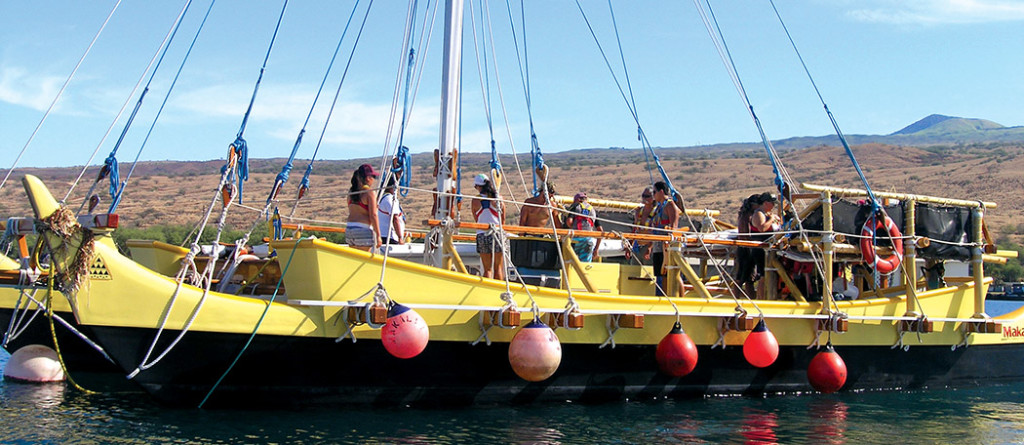
Land Crew
Traditionally, the skills and contributions of the entire island went into making a successful voyage. Just as the canoe crew has many dimensions to their training, the land crew, coordinated by Keala Kahuanui and Chadd, will be engaging in growing, preserving and preparing food to sustain the canoe crew on their journey, as well as creating cordage and learning protocols and chants.
Representatives from the four participating districts of Hilo, Hāmākua, Kohala and Kailua-Kona meet on a regular basis to learn about and prepare foods and cordage.
Supplying healthy, balanced food for the crew without benefit of refrigeration is the challenge being taken on by the school gardens. The first quarter of the year (2017) focused on trainings in food processing and preservation such as dehydration, pickling, and canning.
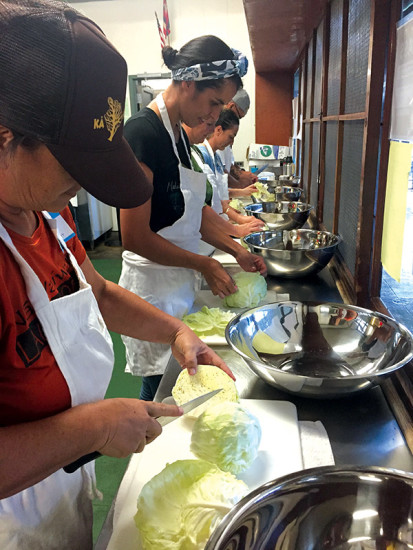
In November, the land crew members met in Laupāhoehoe to study preservation techniques and process foods. “We made sauerkraut the first day. We made liliko‘i, strawberry, and mango jam. We did four hours of reading [safe food preparation] and then we did the hands-on work. The next week we did fish, chicken, and sausage making and it’s all preserved,” said Heather Sarsona, Kanu o ka ʽĀina garden coordinator.
The hope is that the process of preparing for the voyage will encourage sustainability in our island community. “The preservation class. The most beautiful thing for me is that it’s teaching us to not waste. To stock our own pantries at home. So that whenever we’re going on a voyage everyone can contribute from their pantry and wasn’t that how it was in the old days?” said Heather.
The other focus area for the land crew is cordage, which literally and metaphorically connects everything together. It lashes the canoe together and binds the crew to the canoe, the community, and the island and is a key part of canoe protocols. The first step is to learn about hau, hala, niu and laʽi, some of the main cordage plants, and prepare them for braiding.
“All the different districts are looking at the resources within their community. If we understand that those resources are still here and take care of it and know how to use it. It’s beautiful. That’s what Hanauna Ola is. To ensure that those exact things, those experiences continue. That they don’t stop,” said Chadd.
Even beyond the voyage, the hope is that the roots of Hanauna Ola will establish themselves as a foundation for a sustainable, healthy life. “If we can provision Makaliʽi, 14 crew members, three meals a day, for a month then we can feed our families. If we can do that for the canoe, it’s possible we can do it for our community. Whatever we do on the canoe is really a reflection back on what we can do on our moku (island),” said Chadd.
The ʽOhana Waʽa has sailed many journeys and the Hanauna Ola program is the wind beneath the sails that will extend those journeys throughout the generations. “What I’ve learned from the canoe is that it’s a community based entity. There’s intention behind it. There’s spirit behind it. There’s family behind it. Every bit from mauka to makai is wrapped up between those two hulls. It’s through Hanauna Ola, that we will sustain the generations through voyaging,” concluded Chadd. ❖
For more information, contact: nakalaiwaa.org
Mahalo Kohala Village HUB – North Kohala Story Sponsor


